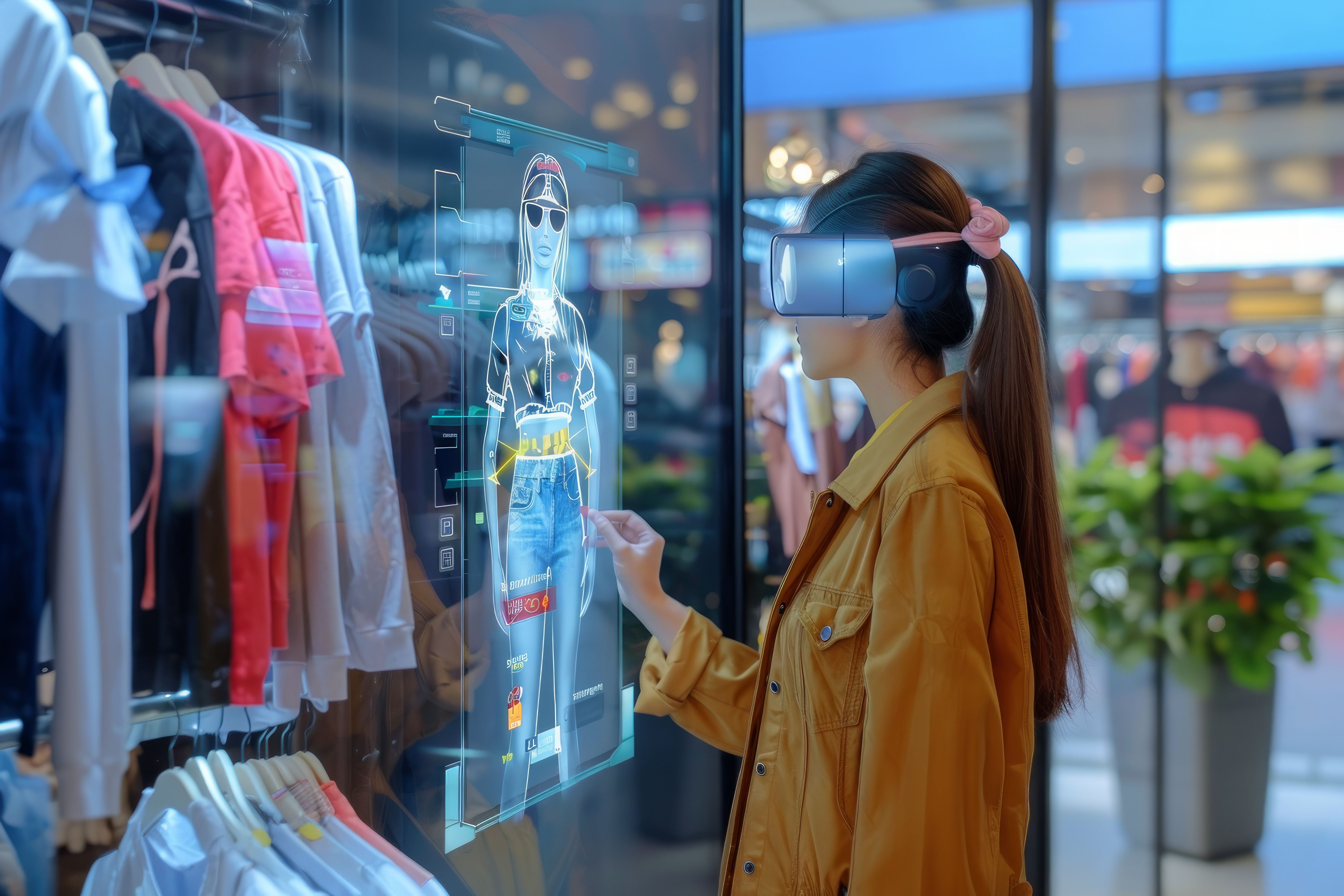What Your Swipe Speed Reveals: Inside an AI outfit planner
Fashion Trends 2025: Where AI Shapes Your Style


TL;DR
Fashion in 2025 is being reshaped by AI—from personalized styling and smarter shopping to sustainability and trend forecasting. AI helps reduce returns, enables virtual try-ons, predicts trends through social media, and even co-creates collections with designers. With AR shopping, AI-driven resale, and real-time outfit suggestions, the future is faster, greener, and more personal. Rather than replacing style, AI enhances it—making fashion choices more intuitive, sustainable, and fun.
Have you ever found yourself in front of your closet wishing, "I would gladly pay someone to choose my clothes"? You're definitely not the only one. The great news is that with fashion trends 2025, you won’t need to. Artificial intelligence is operating behind the scenes to develop a new generation of AI fashion brands and transform the future of AI shopping. Let’s explore how technology is converting outfit stress into easy-going style.
Personalization That Feels Personal

Almost 89% of shoppers have sent back an online purchase in the last three years. While in-store returns hover around 8%, the number shoots up to nearly 88% for online orders. That’s about one in four items going back. A big reason is the generic, one-size-fits-all shopping approach, which often leaves custo mers dissatisfied. It’s a clear signal that we need a shift toward more personalized, smarter shopping experiences.
- The change: More than 70% of consumers desire brands that truly understand them. AI-driven companies like Glance.ai are meeting this demand.
- How it functions: These platforms utilize your preferences—such as colors, shapes, and past purchases—to suggest outfits.
- Real example:
- Introducing Raj: He’s 28, telecommutes, and prefers natural tones. After trying an AI stylist, he began receiving suggestions like linen co-ords and canvas sneakers—items he had never thought about before. No more misses, only perfect fits.
AI turns casual scrolling into actual buying, showing us where the future of AI shopping really shines.
Sustainability Made Smarter

Did you know? The fast fashion segment is valued at $45.97 billion in 2025 and expected to grow to $67.77 billion by 2032 (5.7% CAGR). This raises the concern of fashion waste, which is a significant issue. This demands that the fashion trends 2025 focus not only on how we style our attire but also on the manufacturing and recycling processes involved.
- Smart supply chains: Companies are now employing AI to monitor fabric consumption, minimize surplus inventory, and repurpose old materials.
- Circular fashion in practice: Certain brands operate resale platforms where AI assesses product quality, recommends repairs, or connects buyers with used items.
- Real-world win:
- EcoWear, an eco-friendly brand, leverages AI to forecast sales and decrease excess inventory by 30%. Furthermore, their resale platform utilizes AI to propose outfits made from previously owned items, enhancing customer loyalty.
This is a significant development—not merely fashion for the present but enduring style for the future.
Virtual Try-Ons That Actually Work

Sick of return racks? Virtual tools like Glance make online purchases less risky.
- No uncertainty: Many tools use your phone's camera to project outfits onto your body shape and size.
- Inclusive models: Google’s virtual try-on feature—and now Glance.ai—offer models for different heights, builds, and skin tones.
- Why it’s important: Increased confidence translates to fewer returns. Users report that these tools help lower return rates by almost 25%.
Welcome to the future of AI shopping — where you can truly visualize yourself in the clothing before making a purchase.
Trend Prediction Using Screens
 In the past, fashion trends trickled down from the runways. Today, AI analyzes social media posts to identify what’s “in” before it truly becomes popular.
In the past, fashion trends trickled down from the runways. Today, AI analyzes social media posts to identify what’s “in” before it truly becomes popular.
- How it operates: AI evaluates millions of images and posts each day to detect trends before they reach the mainstream.
- Brands involved: Companies can now anticipate which designs—like pastel co-ords or oversized tees—will be in high demand before they are launched.
- Illustration: Early in 2024, AI noticed an increase in the popularity of “linen utility sets.” By summer, many brands introduced this style and quickly sold out within weeks.
This isn’t about foreseeing the future—it’s instant fashion trend prediction.
AI-Created Collections
Some fashion designers are collaborating with AI to develop complete outfits.
- Pattern creation: AI proposes patterns based on climate data, seasonal trends, and customer buying history.
- Design with sustainability: Other AI applications recommend layouts that minimize fabric waste or combine up-cycled materials into new garments.
- Brand example:
- Vue.ai: This AI fashion brand uses its generative AI tools to automate on-model imagery and handle inventory forecasting. Several clothing labels using Vue.ai report a 22% reduction in product returns and a 5x faster image-to-market cycle
This isn’t a concept from science fiction—it’s fashion trends for 2025 happening in real-time.
AI-Powered Style Identity: Dressing for You
Living your best stylish life comes from choices tailored just for you.
- Data in action: AI analyzes previous purchases, social dynamics, and even your Spotify playlists to recommend clothing that feels custom-made for you.
- Specialized styles: Think along the lines of “minimalist outdoor enthusiast” or “urban style creator”—all mood-tagged and ready to explore.
- Your wardrobe, enhanced: Instead of merely selling, brands are curating. Shoppers receive suggestions on how to blend their existing items this week with new pieces.
This is the future of AI shopping : individualized, precise, and empowering.
Augmented Reality Shopping

The intersection of online and in-store—AR is creating an immersive fashion experience.
- Smart mirrors: Step in front of one, touch the screen, and instantly see yourself in various outfits.
- V-commerce: Click on a piece in your newsfeed and watch a 3D figure try it on — no apps necessary.
- What this implies: Reduced uncertainly, increased try-on enjoyment, and an enriched shopping experience—ideal for fashion trends 2025.
Case Study: A Day with Glance AI
Let’s follow Sam throughout her shopping day:
- Morning alert: Glance AI sends a notification, suggesting a “Breezy linen co-ord for 88°F.”
- Brunch & errands: She receives an outfit suggestion for utility shorts paired with a graphic tee—ideal for her Uber ride.
- Evening hike: Glance shifts to recommend a moisture-wicking tee and cargo pants.
- Weekend resale: Glance highlights a gently-used denim jacket in her size—precisely what she wanted.
Thanks to AI, Sam avoids unnecessary shopping time. Her outfits are perfectly suited to her activities, feelings, and weather—all day round.
AI Compared to Traditional Styling
| Feature | Old-School Styling | AI Fashion Shopping |
| Time Spent | 20–30 min per outfit | Under 1 minute on your lock screen |
| Trend Awareness | Magazine/scout-driven | Real-time feeds + AI insights |
| Fit Customization | Trial & error | Personalized to your shape |
| Returns | Higher rates | Significantly reduced |
| Sustainability | Trend → Excess Stock | Demand-driven + circular options |
No contest: the future of AI shopping is faster, smarter, and kinder to the planet.
The Future Beyond 2025
- Deepfake modeling: You may soon be able to try clothes on in hyper-realistic videos.
- Fully automated AI design: Collections created in a single click based on your profile.
- Voice customization: “Hey AI, choose me an outfit for the weekend.” And it’s done.
- Ethical considerations: Inclusive sizing integrated into every brand’s AI platform.
Expect fashion trends 2025 to keep evolving—with your preferences at the center.
Final Thought: Functional Wearable Technology
AI isn't meant to replace your style—it aims to enhance it. The growth of AI fashion brands and smarter shopping solutions results in less uncertainty and more excitement. Especially when, The US apparel market is valued at $365.70 billion in 2025, with a projected CAGR of 2.11% through 2028. Whether you prefer pastel co-ords, rugged utility, or light linen styles, AI serves as your co-pilot—not your stylist.
FAQs
- What is the future of AI in fashion?
AI will shape fashion trends, personalize shopping, and reduce waste through smarter design and production. - Is there an AI for shopping?
Yes. Tools like Glance AI help users find clothes that match their size, style, and preferences instantly. - How will AI change online shopping?
AI will make shopping faster, more accurate, and more personal, with fewer returns and better recommendations. - Are AI fashion tools expensive?
Not at all. Many basics are free, with premium features
priced reasonably, often cheaper than traditional styling
fees.
5. Will AI replace human stylists?
No. It handles basics. Stylists still offer emotional input,
editorial vision, and brand storytelling.






